|
My bees survived the winter, luckily! I had wrapped them in sheets of thick styrofoam and geotextile and made sure they were full of honey and pollen so they had enough food for the winter. I guess it paid off, since both hives were fairly strong as spring emerged. I started with two hives, and I had named them based on their collective temperament - Rose is the one on the left since it's a stronger colony and also a bit more aggressive. Daphne is on the right since the queen is less productive, so there are less bees, and they're more docile. Rose was the only one that produced enough honey last year for me to harvest (Daphne was a little slow getting off the ground), so I was expecting that it would continue to be pretty productive this year. When I say "productive", I mean that the queen lays a lot of eggs, so there are more worker bees, which means more worker bees make more honey. If I was keeping hives to make money or to have all of the honey I could possibly use, I would replace my less productive hive with a new queen so that I could harvest honey from both hives. But my nerdy biology goal is to raise bees that are adapted to my area, by splitting the strong hives as they grow and letting them make their own queen instead of continuously buying queens from a breeder, as most people do. It's a bit more risky to let the bees make their own queen, since then it needs to mate with males in the area (instead of coming inseminated already, as is when you buy them from a breeder), and it can get killed when it leaves the hive for this mating mission. 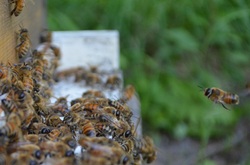 So over the weekend, I built a third hive. I'm not very mechanically minded so this actually took me a few hours to hammer all of the pieces together and paint them. Once it was all set up and the linseed oil I used was dry (I use linseed oil because it's less toxic than paint), I transferred a few frames from the strong hive into the new hive. Usually people put four or five frames from the old hive into the new hive, and those frames need to include honey (to give the new colony extra food if they need it), capped brood and eggs (developing worker bees so the population is continually replenished), adult worker bees, and a new queen cell. By chance, I found that the bees had been growing a new queen in a queen cell for their strong hive, which is a sign that they would have swarmed. Swarming is when the hive is too full or small for everyone, so the queen and a cluster of worker bees take off to start a new home, leaving more room for the new queen and rest of the workers. Once I put five frames from the Rose hive into the new hive (still trying to figure out a name for the new one), I added empty frames to make sure the hive was full, then I closed the lid. This is my first time splitting a colony, so I kind of saw it as an experiment - we'll see if it works!
0 Comments
For the month of May, I told myself (and all of you) that I would avoid meat unless it was ethically and locally raised. I ate some super delicious, organic local sausages from a friend's farm. But I did eat normal meat twice, somewhat accidentally. Once, I went to someone's house for a barbecue, and it would have been rude to refuse meat. I also thought that May only had 30 days, so at midnight on the 30th, I had an amazing sausage, thinking that I had just finished my challenge. I realized the next day that it was actually May 31st. So I didn't quite make it the whole month without factory farmed meat, but I was fairly close. I've been trying to figure out what my next challenge is, and I decided on it last night: No high fructose corn syrup! Why did I choose this? It's summer, which to me means Tim Horton's ice caps, cold soda, popsicles, and anything else cool and sugary. However, I've been researching more about the impact that systemic pesticides that are used on corn have on bees. My own bees died over the winter, seemingly from colony collapse disorder. Although colony collapse seemed like a mystery for a few years, the scientific evidence now points to neonicotinoids, a type of pesticides that is used on 99% of corn. Bees can be exposed to this when they get corn pollen, or when the water droplets catch the pesticides. The pesticide has sublethal effects, but over time it can weaken and kill them, leaving basically no trace that the pesticide was the cause. I believe the corn grown on Mac Campus, at McGill where I had my bees, poisoned my bees. So I've been compiling the scientific literature about how this pesticide on the corn has been killing bees. I just installed two new colonies of bees at my cottage. As I was reading the scientific articles, I thought - how can I possibly support products made from corn, when I have been so upset and frustrated that this corn killed my bees, and pollinators in general?
So that's when I decided- I can't eat high fructose corn syrup. For the past few months, I've been preparing to get a beehive. I got the idea suddenly when I was on a train to Toronto: why don't I start a beehive at the cottage? I had already heard a lot about colony collapse disorder, and the mystery of why bees were dying off. On my self sufficiency kick this summer, I thought that getting some honey bees would be a good way to help the population, and make me a little honey on the side. Plus, I think anyone who has read even a little bit about honey bees finds them facinating, with their social structure and dancing. I had a hard time figuring out how to get started, but I read a few books about beekeeping for absolute beginners and tried to talk to a lot of people about it. Turns out, I had two friends and a coworker who also had bees. I realized that instead of starting one at the cottage, where I would be completely isolated and not have anyone to ask for help, I could join the McGill Community Apiary. There are communal supplies (like the mesh hats, smoker, and tools), and it's great to have a community of people to answer my questions (like..."uhh...so what do I do with these bees when I get them?"). My first step was to order the pieces of the hive. I knew I needed a series of boxes and other various wooden things, but it was Branislav, who founded the McGill Apiary a few years ago, who gave me a list of the essential parts that I needed for a Langstroth hive (the most common type). About a few weeks ago, my materials arrived from Propolis-Etc, a beekeeping supplies company in Quebec. You can buy parts of the hive already assembled and painted, but I chose to save some money by D.I.mYself. My hive costs about $170 (taxes included) for the bottom board, two medium supers (where the bees live and make honey), a feeder for the fall/spring, 20 plastic frames for the bees to make combs over (10 per super), an inner cover, an entrance reducer, and an outer cover.  Hive all assembled and painted. I'm not very handy, so I enlisted the help of a new friend to help put it together and paint. From what I've read, it's not a huge amount of work to maintain a beehive, but they do need to be checked on every 2 weeks or so, and preparations need to be made in the fall and spring. Therefore, it's helpful to have 2 people share the work of a hive and split the honey at the end (especially when that friend lives within 5 minutes from the hive, instead of 45 minutes like myself). Next part: the bees! I had never even been near a beehive in real life until the day I put mine together. I started second guessing myeslf when I showed up the apiary and realized that I was 2 feet away from someone else's buzzing, very active hive with hundreds of scary bees. Would my hammering and talking anger them, forcing them to turn on me in a massive swarm? Nope. I could sit off to the side of a hive and watch them go in and out without them really caring. They do sting, but it seems like it's most likely when you're standing in their flight path...so stay away from the front entrance! Once I realized that the bees didn't really care that I was there, I felt more comfortable about what I had just gotten myself into. Over the weekend, Branislav took 4 frames of someone else's hive and put them in my own. The workers were happy to stay in their shiney new hive for a few days without a queen. Then, a queen and a few drones in a little plastic cage were put into my new hive. There is a bunch of sugar plugging the exit of the cage, so within a few days, they eat their way out of the container. By that time, the workers have accepted their new queen. Within a few days, you have to check to make sure the queen is still there (she's marked with a little white dot, which makes it a heck of a lot easier to distinguish a slightly larger bee from hundreds of others). I checked on my hive on Monday, and am pleased to report that it seems to be going well! I didn't realize that I had to paint the plastic frames with wax because usually the bees won't start putting eggs or honey there without that foundation. So my project today is to melt some leftover beeswax from the apiary and paint it onto my plastic frames. I had kind of gotten into beekeeping because it sounded interesting and I thought it would be good to help out the overall honey bee population. I did not expect the feeling of wonder and love when I sat next to my complete beehive and watched the worker bees dance their heart out at the entrance of the hive. And if you don't think bees are cool yet, watch this video: |
About ShonaI'm an eco-conscious girl from Montreal, Quebec. I'm currently an adjunct science professor at Champlain College of Vermont (Montreal Campus). I'm interested in any opportunities to expand my experience with grassroots activism, climate change legislation, or environmental education. Archives
March 2016
Categories
All
|
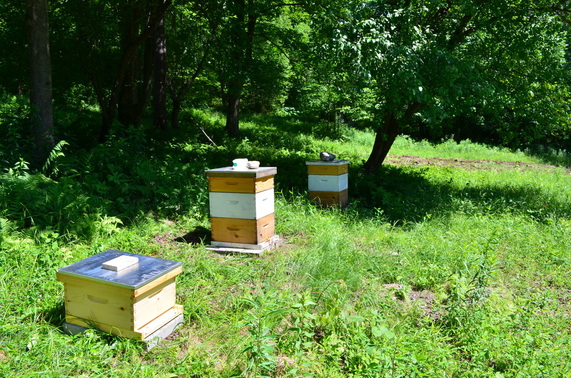

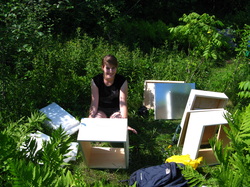


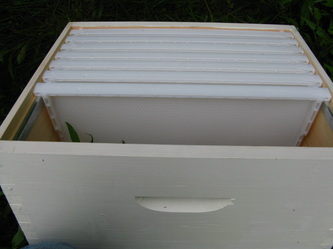


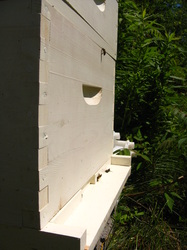
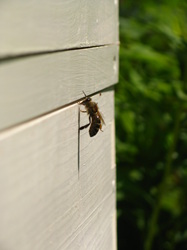
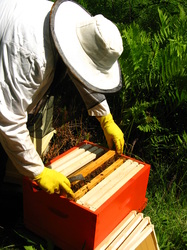
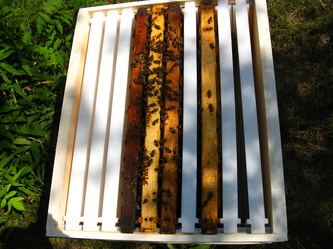


 RSS Feed
RSS Feed
